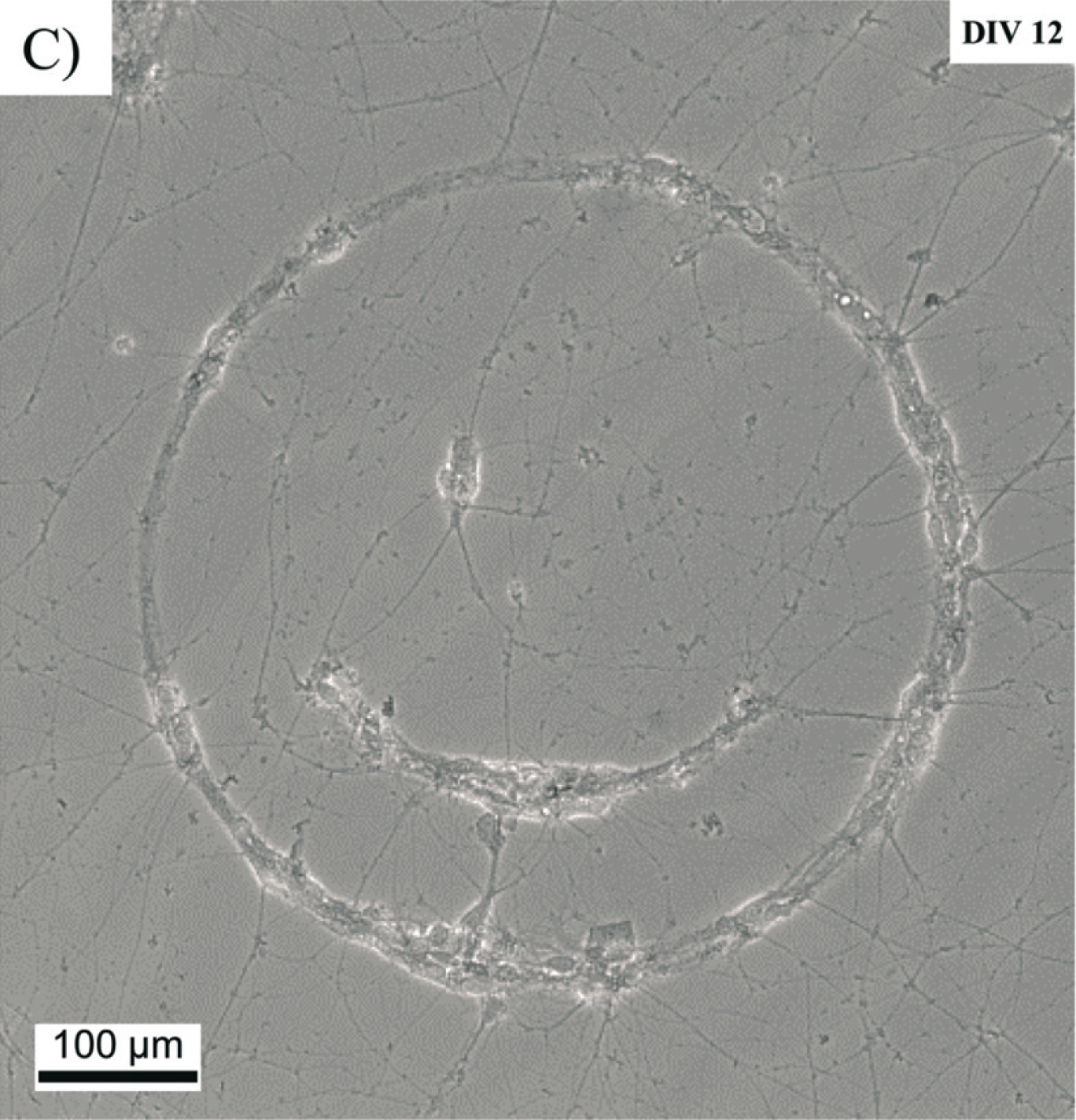Forro, Csaba
PhD student, 2014 to 2019

Research Interest: Patterned neural networks
There is a need to reduce the complexity of the systems studied in Neuroscience. The sheer amount of information gathered from MRI scans or microelectrodes is intractable when full brains, brain slices, or randomly seeded in-vitro cultures are studied. Causal events are also extremely hard to quantify because of the connectivity of such systems which makes decoupling (usually sub-sampled-) information sources an almost impossible task.
Building well-defined neural networks, similar to mathematical graphs where the cell bodies constitute the vertices and the axons the edges, is a necessary milestone to achieve in the attempt to understand the relevance and functionality of neural networks. The precise topology allows for inferring exact information flow and makes extracting causal information a much easier task. Furthermore, the complexity can be controlled, allowing for both discovering basic mechanisms but also a gradual build-up of our understanding.
The biggest challenge is to tailor the directional connections between cells once they are in place. This concept is called axon guidance. We use different approaches such as adhesive protein gradients, lithographically engineered microstructures, etc, in order to achieve axonal directionality.

Additional interests: Conducting nanowire networks
Conducting metamaterials such as elastomers filled with conductive nanowires, typically silver or platinum, have gained a huge interest in the past decade because of the field of stretchable electronics. Although these systems are extensively studied, there isn't a clear understanding of their resistive behavior neither at the level of their sheet resistance, nor their stretching behavior.
Commonly percolative theory is invoked to characterize data, but unfortunately does not provide any predictive understanding of the system.
I focus on combining simulations and experimental data produce in our laboratory in order to develop an analytical model of the resistance of such systems depending on the material, the nanowire dimension, and the contact resistance between wires.
Conferences
28.11.2016: Neurofluidics 2016, 28.11-29.11, Grenoble, France
02.07.2016: Computational Neuroscience annual meeting (CNS2016), Jeju, South-Korea. Poster contribution:
02.05.2016: From Nano to Bio XVI, Dubrovnik, Croatia. Talk contribution:
